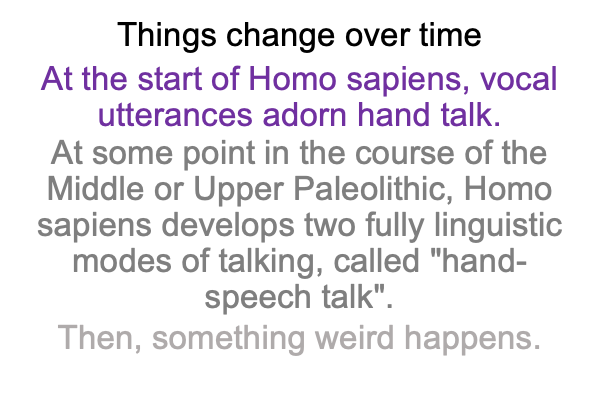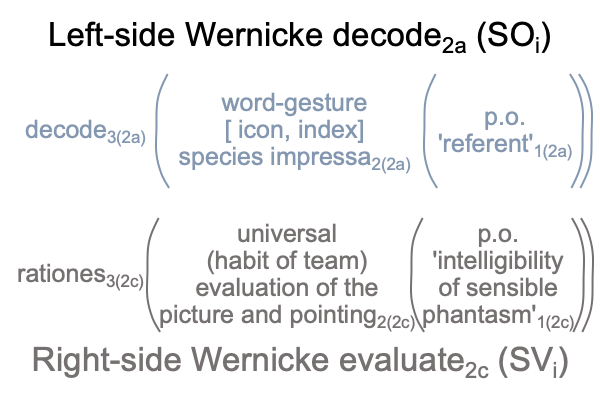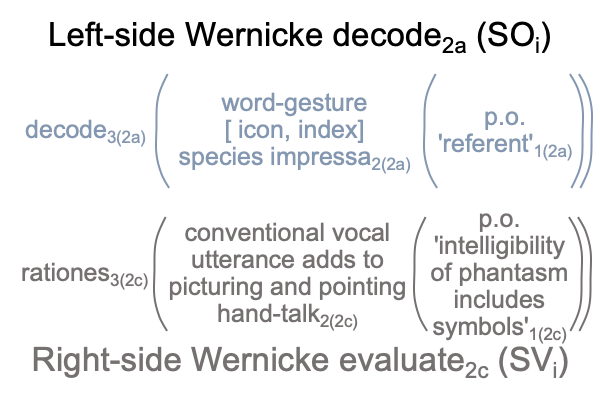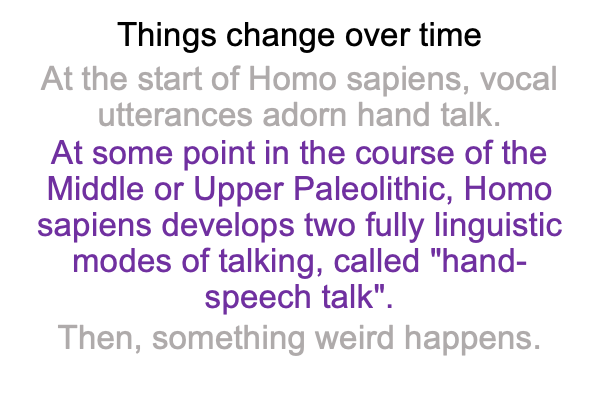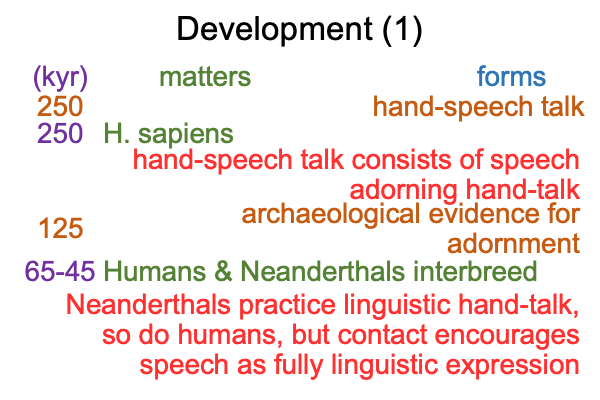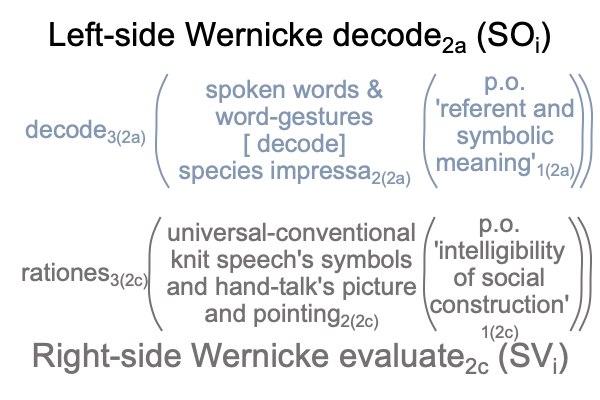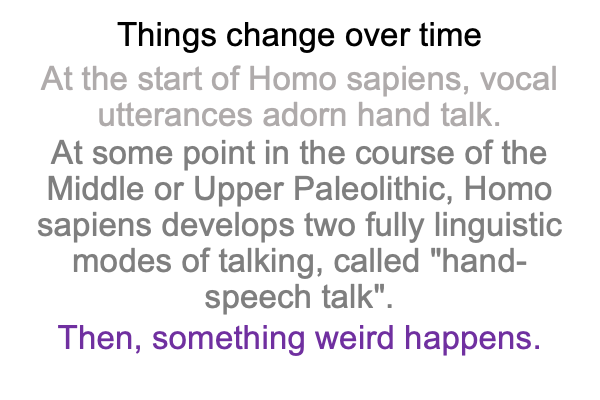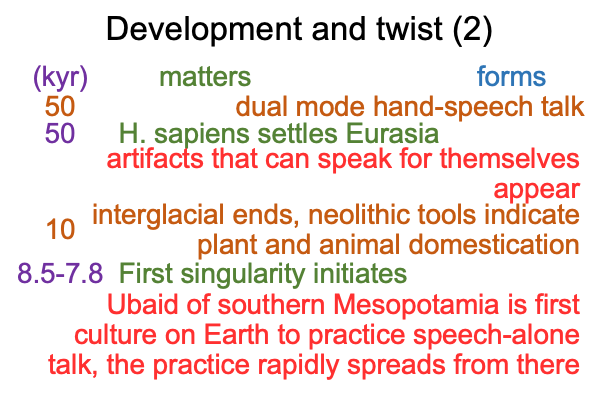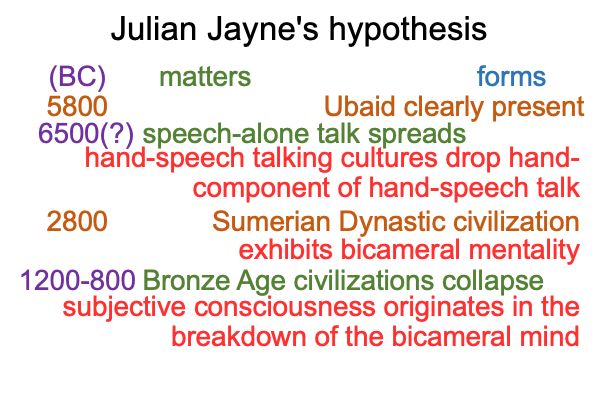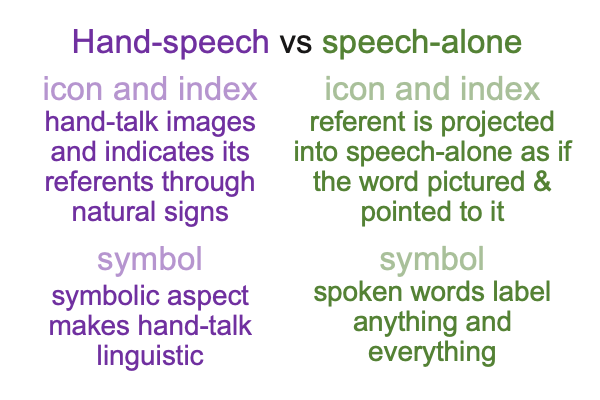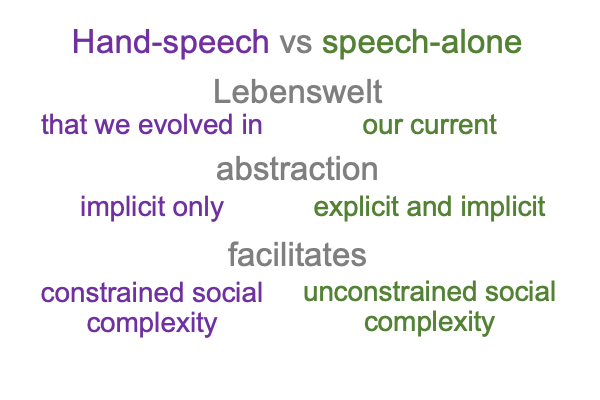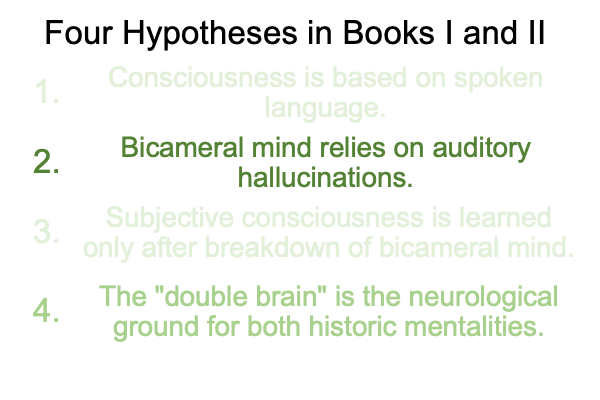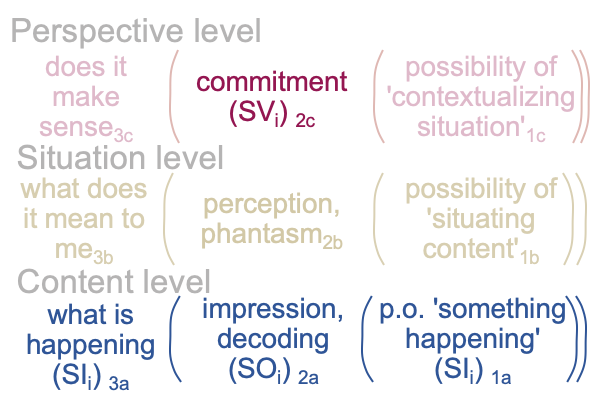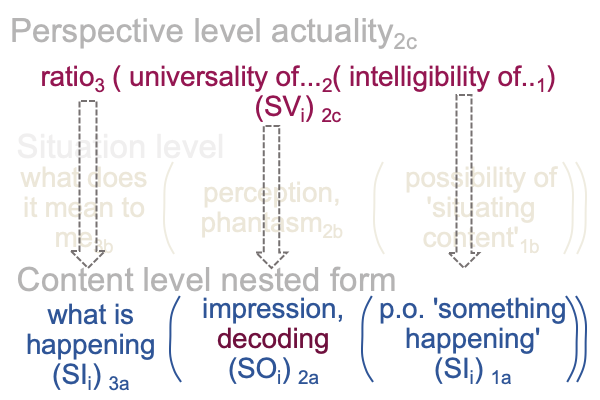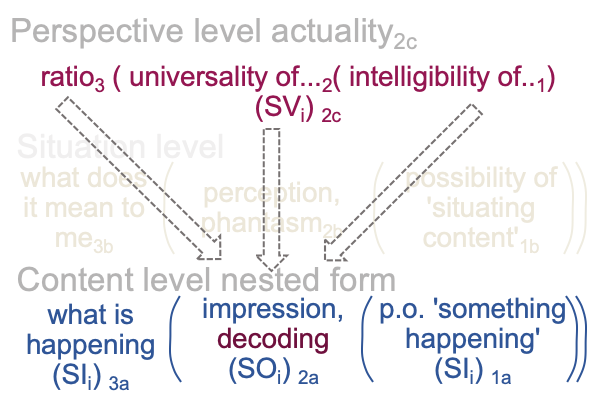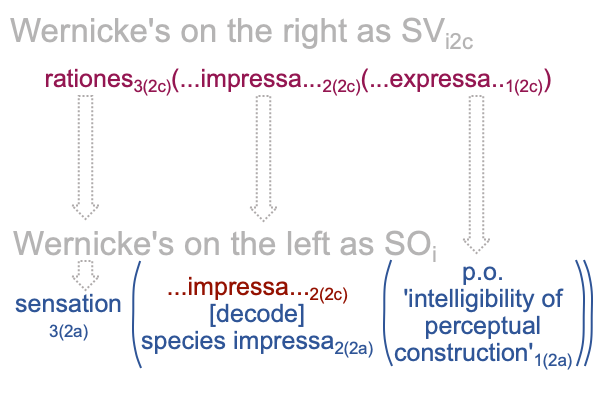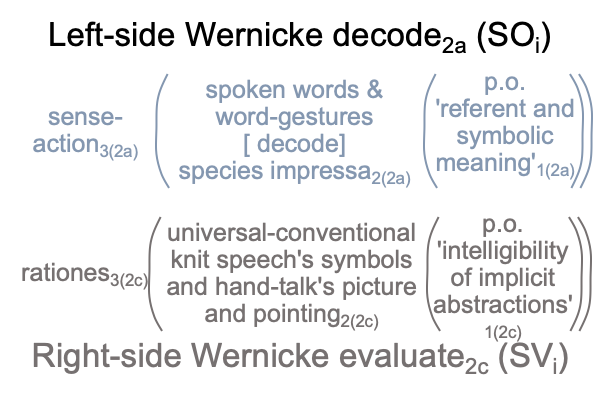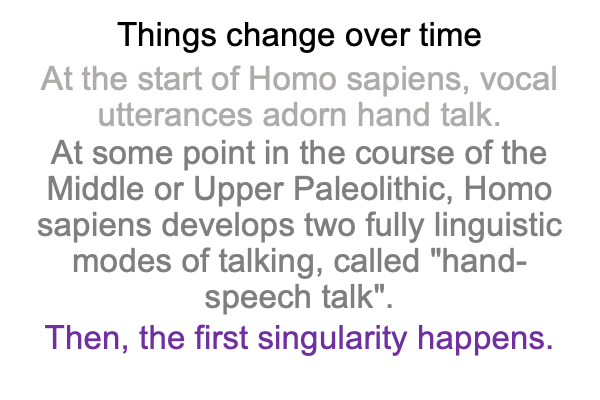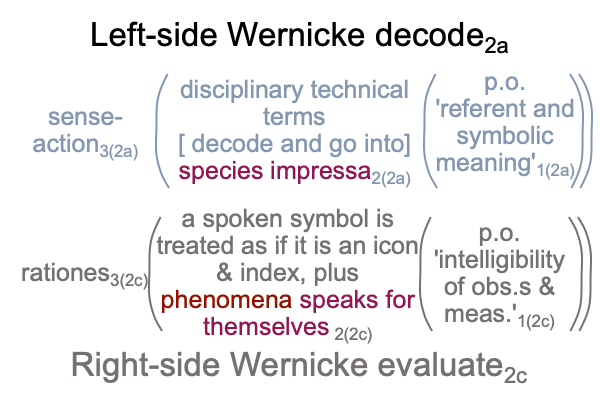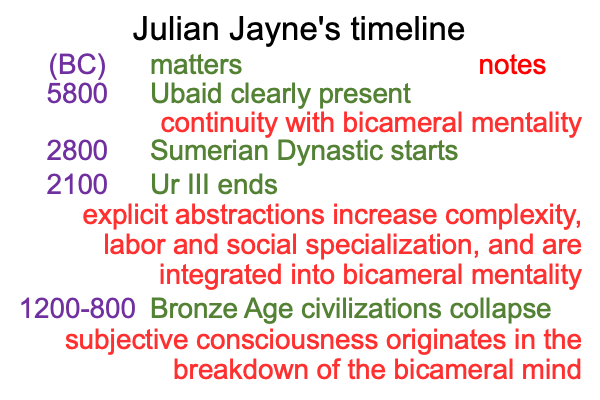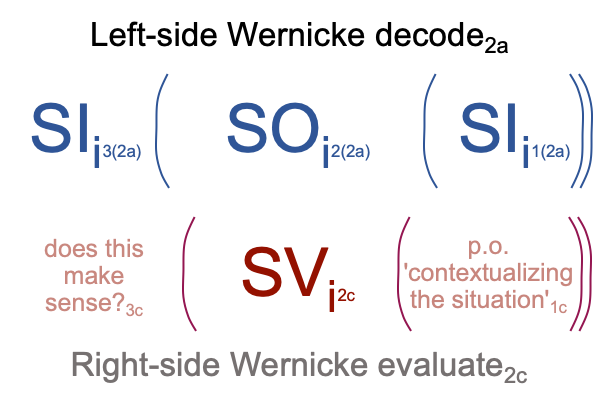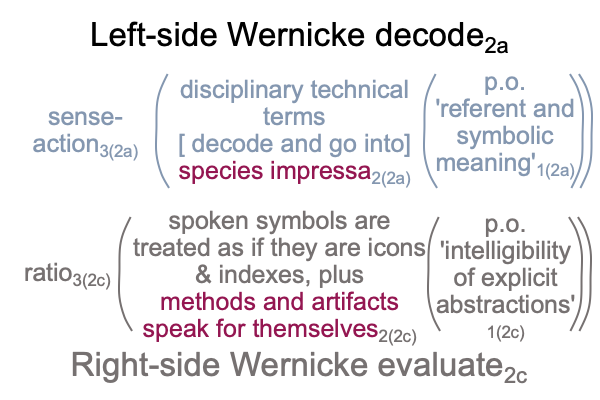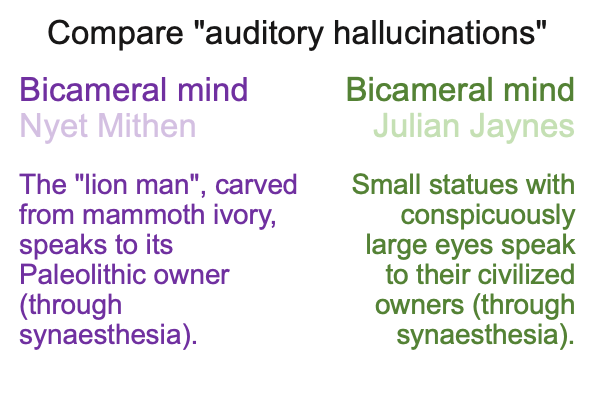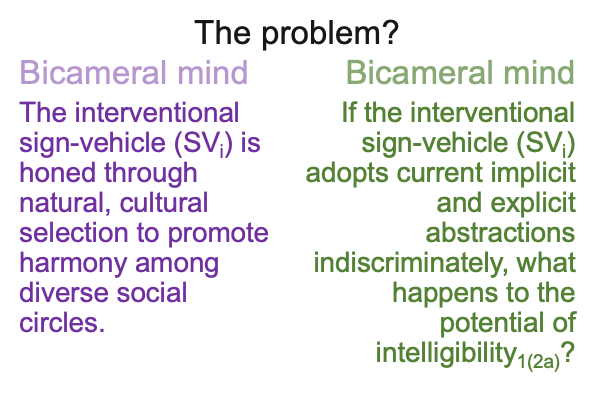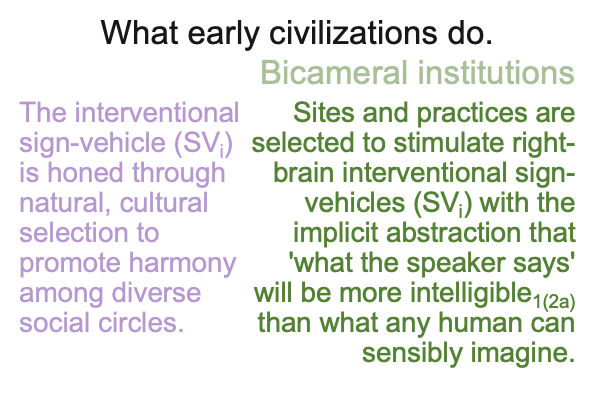How the Voice Gets Added to Hand Talk in Human Evolution Part B1 (Part 11 of 21)
0371 At this juncture, I intend to link the prior comments about Julian Jaynes’s Book (1976), The Origin of Consciousness in the Breakdown of the Bicameral Mind, to the archaeological record.
The link is already established in points 320 through 330, which covers the second period in human evolution (the second period ranges between 3.5 and 0.6 Myr, according to Comments on Michael Tomasello’s Arc of Inquiry (1999-2019), by Razie Mah, available at smashwords and other e-book venues, as well as Razie Mah’s blog covering January through March, 2024).
0372 The following figure covers from the the start of the domestication of fire (at 0.8Myr) until the earliest appearance of Homo sapiens (at, say, 0.3Myr). This corresponds to the third period of human evolution (using Tomasello’s nomenclature). This is also where Steven Mithen’s nyet hypothesis applies.
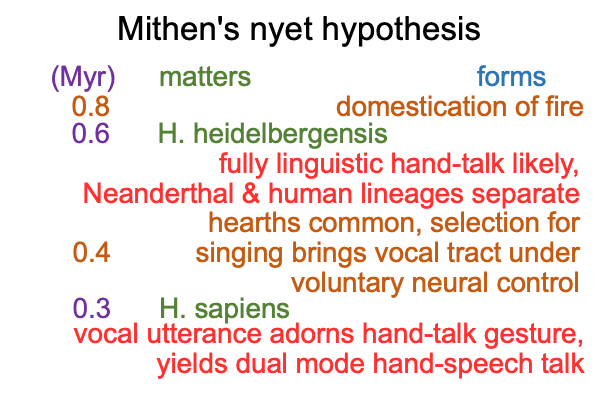
0373 As fire is domesticated, the number of teams increases because cooking with fire breaks down the cellular matrices of otherwise indigestible raw food, making more nutrients and calories available. More teams prosper, because there are more successful ways to forage for food. Cooking with fire is a significant technology of production.
Even as the selection pressures on teams (15) slacken, the selection pressures on the community (150), mega-band (500) and tribe (1500) increase.
The question arises, “How do we maintain harmony among teams and other social circles with our newfound abundance?”
0374 One answer is that hand-talk, once the domain of teams, enters into the community and becomes fully linguistic.
0375 Proto-linguistic hand-talk can only engage in sensible construction. The content and situation levels are in play. The team constitutes the perspective level. The interventional sign-relation may be active in generating a team. But, once the team is established, the interventional sign-relation comes into play only when the team sees a foraging opportunity. Commitment2c belongs to the team.
0376 Fully linguistic hand-talk engages in both sensible and social construction. In a communal setting, teams can clash with other teams. High-risk and high-reward teams may upset families and friends participating in less-risk and less-reward teams. Social construction is required in order to create cognitive spaces that promote harmony. Grammatically correct, counter-intuitive hand-talk statements create the species impressa2a that undergird those cognitive spaces (species expressa2b).
For example, an animal may be associated with a team by juxtaposing hand-talk words. The team-animal may then be treated as a person in night-time hand-talk stories where each manual-brachial word-gesture is grounded in the natural signs of icons and indexes, but symbolic operations allow grammatically correct, counter-intuitive statements. Two radically different (yet successful) teams, the team that digs tubers for fire cooking and the team that hunts large game for fire cooking, learn to get along though stories about [RABBIT][MAN] and [WOLF][MAN].
0377 The relational structure of commitment2c is implicitly abstracted during story-telling events, by Wernicke’s region on the right. In concert, manual-brachial word gestures are automatically decoded by Wernicke’s region on the left. Two chambers in the brain work to pump interventional sign-relations from the perspective to the content level. These are then situated as phantasms2b, cognitive spaces that brings all social circles into harmony, in the hominin mind.
Another modern term for those implicit abstractions is “social construction”. Social construction is the meaning underlying the word, “religion”.
0378 Here is a list of these key points.
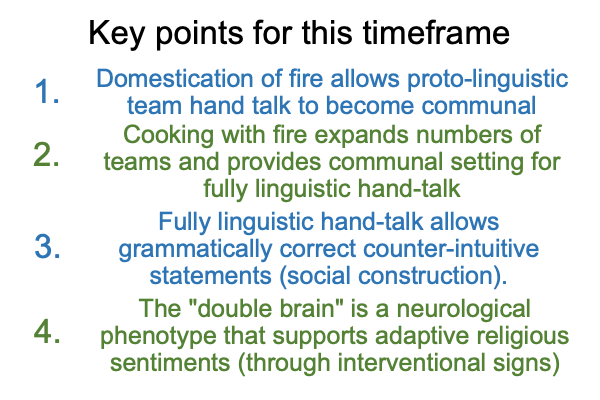
0379 What about the voice?
Here is a picture of the next set of key points.
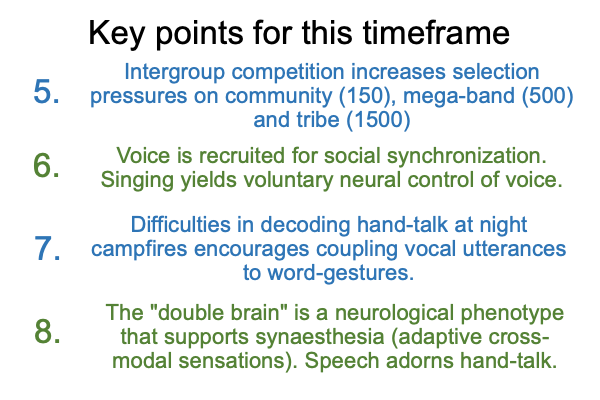
0380 The brain of Homo heidelbergensis is almost as large as that of Homo sapiens. So, what is changing is not quantitative, but qualitative. Once human and Neanderthal lineages separate, intergroup competition among African populations increases selection pressures on large social circles. The community (150) meets routinely. The mega-band (500) gathers seasonally. The tribe (1500) gathers on rare occasions.
0381 None of these gatherings last long, because gatherings create opportunities for disaster (disease). So, the voice is recruited for rapid social synchronization by way of communal singing. If the person knows the tunes, the person belongs. The songs do not have words. They have harmonies and beats.
Sexual selection assists. The vocal tract changes and the voice comes under voluntary control.
0382 Before the evolution of Homo sapiens, day-talk and night-talk are distinct traditions that encourage story-telling. Hearths are common by 400kyr. Night-time hand-talk with a campfire as illumination presents challenges. So, traditions arise where a vocal utterance accompanies each hand-talk word gesture.
This is the real subject matter of Steven Mithen’s book, The Language Puzzle. The hidden questions that this evolutionary anthropologist does not consciously address are, “How is speech added to hand-talk in human evolution? Also, how is it that we, civilized folk, only practice speech-alone talk?”
0383 The answer to the first question is synaesthesia, cross-modal species impressa2a. The storyteller and audience are committed2c to fully appreciating grammatically correct counterintuitive story statements, but they have difficulties with decoding in the flickering light. Wernicke’s region on the right encourages Wernicke’s region on the left to process both hand-talk and accompanying vocal-utterance. In sum, species impressa2a for iconic and indexal hand talk crosses over into sound, so that both modes are automatically decoded.
0384 In retrospect, the evolutionary anthropologist may say that speech emerges as an adornment to hand-talk, prior to the appearance of our species, Homo sapiens, around 250kyr.
From the start, Homo sapiens practices hand-speech talk.
Homo sapiens practices hand-speech talk for the next 240,000 years.

